By Ignacio Ciampitti and Mary Knapp et.al
Selection of the optimal planting date is one of the most critical factors in the decision-making process for farmers. In making this decision, producers should consider soil temperatures rather than just calendar dates. After a very mild start to March, air temperatures across Kansas are forecasted to cool down in the coming days.
For the week of March 4-10, average weekly soil temperatures at 2 inches among crop reporting districts ranged from 39oF to 51oF (Figure 1). Differences can be quite large, based on soil moisture, residue, and soil types. For instance, the weekly average at Oberlin is 51oF (red arrow, Fig. 1), while it is 39oF at Colby (black arrow, Fig. 1).
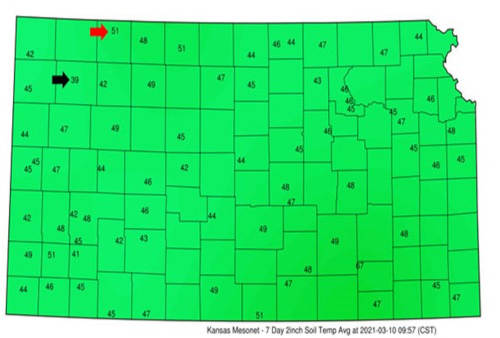
Figure 1. Average soil temperatures at 2-inch soil depth for the week of March 4 to 10, 2021. The red and black arrows highlight a large difference in soil temperature in neighboring counties in NW Kansas (http://mesonet.k-state.edu/).
Air temperatures ranged from 55oF to 43oF, with the coolest temperatures in the west and the warmest in the east (Figure 2).
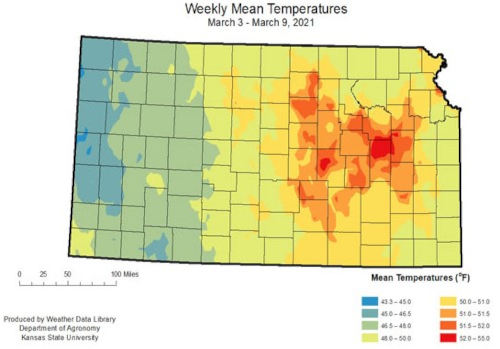
Figure 2. Weekly mean air temperatures for the week of March 3 - 9, 2021.
Projections for the coming weeks call for cooler-than-normal temperatures statewide (Figure 3). In addition, significant moisture is expected, which will slow soil warming (Figure 4).
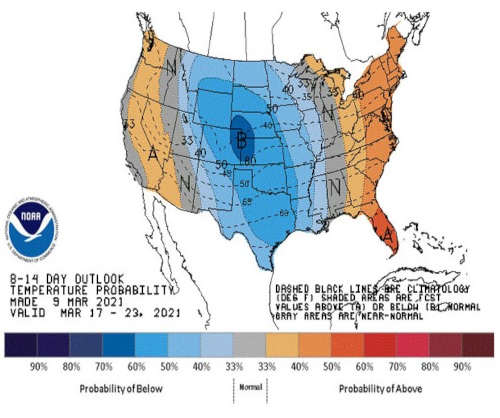
Figure 3. 8 to 14-day outlook temperature probability for March 17 – 23, 2021. (NOAA)

Figure 4. Quantitative Precipitation Forecast for March 10-17, 2021 (WPC)
The actual change in soil temperatures in any given field will be affected by amount of residue cover, soil moisture, and landscape position. Wet soils under a no-tillage system will be slower to warm. Dry soils will fluctuate more rapidly, matching air temperatures, particularly if skies are clear. Current soil moisture status across Kansas is moderate to dry (Figure 5).
The largest weekly departure in precipitation occurred in the southeast corner of Kansas (Figure 6). After the wet upcoming week, projections for the latter part of March call for precipitation to be below-normal for most of Kansas (Figure 7).
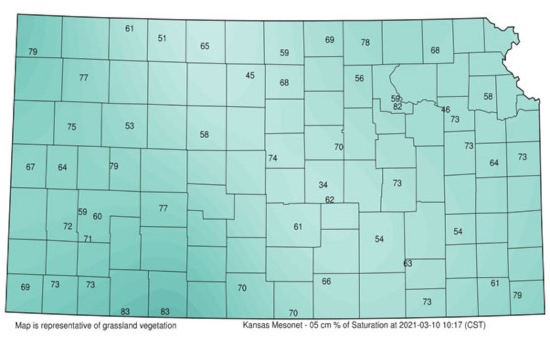
Figure 5. Soil moisture at 2 inches as of March 10, 2021 (Kansas Mesonet).
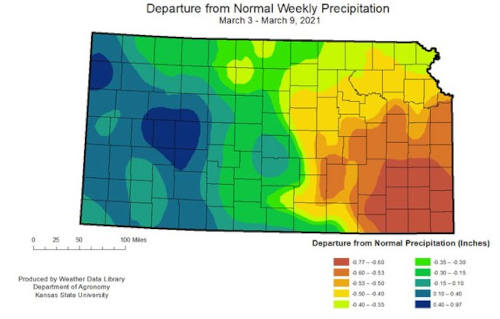
Figure 6. Departure from normal precipitation for the week of March 3-9, 2021
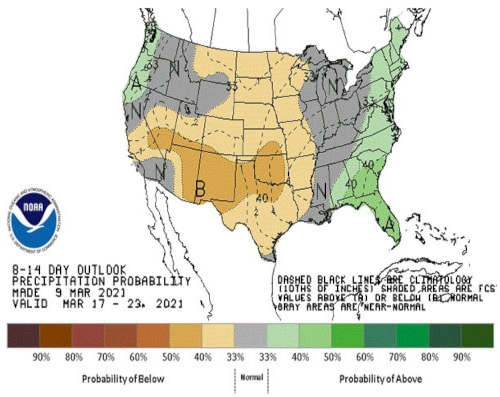
Figure 7. 8 to 14-day outlook precipitation probability for March 17 – to-23, 2021. (NOAA)
Optimal soil temperature for crop emergence
Every summer row crop has an optimal soil temperature for emergence. A minimum for corn is 50oF for germination and early growth. However, uniformity and synchrony in emergence is primarily achieved when soil temperatures are above 55oF. Uneven soil temperatures around the seed zone can produce non-uniform crop germination and emergence. Lack of uniformity in emergence can greatly impact corn potential yields. This is particularly true for corn, since it is the earliest summer row crop planted. When soil temperatures remain at or below 50oF after planting, the damage to germinating seed can be particularly severe.
Impact of a hard freeze on corn
Corn is also more likely than other summer crops to be affected by a hard freeze after emergence if it is planted too early. The impact of a hard freeze on emerged corn will vary depending on how low the temperature gets, the intensity and duration of the low temperatures, field variability and residue distribution, tillage systems, soil type and moisture conditions (more severe under dry conditions), and the growth stage of the plant. Injury is most likely on very young seedlings or on plants beyond the V5-6 growth stage, when the growing point is above the soil surface.
The average day for last spring freeze (32oF) is quite variable around the state (Figure 8). The largest variability is from southeast to northwest Kansas; with the earliest last spring freeze date for the southeast region (April 5-15) and latest for the northwest area (>May 3). Corn planting dates before April 15 in the southeast region would increase the likelihood of the crop suffering from a late spring freeze. Similar conditions can be projected for northwest Kansas if corn is planted before May 3.
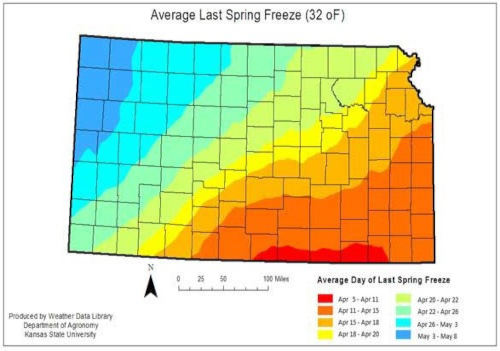
Figure 8. Average last spring freeze (32 degrees F) for Kansas.
Producers should consider all these factors when deciding on the optimal planting time.
Source : ksu.edu